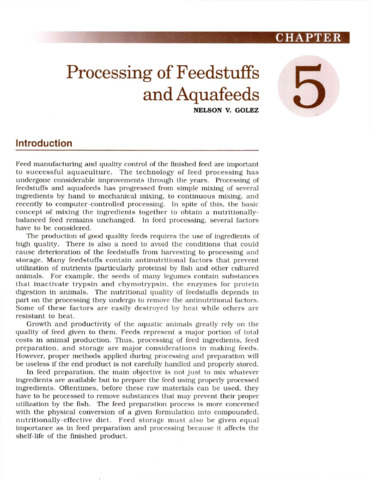Effects of dietary carbohydrate, lipid and energy on the growth, feed efficiency, and tissue composition of bighead carp (Aristichthys nobilis) fry
| dc.contributor.author | Trono-Legiralde, Maria Theresa | |
| dc.date.accessioned | 2011-07-18T14:19:04Z | |
| dc.date.available | 2011-07-18T14:19:04Z | |
| dc.date.issued | 1996 | |
| dc.identifier.uri | http://hdl.handle.net/10862/542 | |
| dc.description | Abstract only | en |
| dc.description.abstract | The utilization of dietary carbohydrate and lipid as energy sources for bighead carp (Aristichthys nobilis) fry and various protein:energy ratios were investigated in a 2x3x3 factorial feeding experiment. Semi-purified diets containing two protein levels (28.9 and 37%) and three levels of lipid (4.26, 5.93 and 6.95%) and carbohydrate (42,48 and 53%) to give different total energy levels were fed to bighead carp fry (48.5 ± 3.5 mg) for 8 weeks.Growth of fry fed diets with 37% protein was significantly higher (P < 0.01) than that of fry fed diets with 28.9% protein level. An increase in dietary lipid from 4.26 to 6.95% depressed growth (P < 0.05). There were no significant differences in feed conversion efficiency (FCE) at varying levels of protein and lipid, although their increments resulted in a decrease in FCE. Increase in dietary protein significantly decreased (P < 0.01) protein efficiency ratio (PER) while increase in dietary carbohydrate significantly decreased (P < 0.05) FCE and PER. Bighead carp fry fed diets containing 3131 and 3470 kcal metabolizable energy/kg and P:E ratio of 92 and 107 mg protein/kcal had the best overall performance. However, the 37% protein diet with approximately 4470 kcal metabolizable energy produced maximum growth. Growth was better with diets containing dietary lipid level of 4.26% and carbohydrate level of 42%. Tissue lipid increased significantly (P < 0.01) with an increase of dietary lipid and carbohydrate. However, inclusion of the highest level of both components in test diets decreased tissue lipid. Tissue protein was significantly higher (P < 0.01) in fry fed high protein diets and low levels of lipid and carbohydrate. Tissue protein, moisture and ash were inversely related to tissue lipid. Survival (%) increased (P < 0.01) with the increase of dietary protein and carbohydrate. Increase of dietary lipid did not significantly affect survival rates of bighead carp fry. | en |
| dc.publisher | Aquaculture Department, Southeast Asian Fisheries Development Center | en |
| dc.title | Effects of dietary carbohydrate, lipid and energy on the growth, feed efficiency, and tissue composition of bighead carp (Aristichthys nobilis) fry | en |
| dc.type | Conference paper | en |
| dc.subject.asfa | artificial feeding | en |
| dc.subject.asfa | carbohydrates | en |
| dc.subject.asfa | diet | en |
| dc.subject.asfa | feed efficiency | en |
| dc.subject.asfa | fish culture | en |
| dc.subject.asfa | growth | en |
| dc.subject.asfa | lipids | en |
| dc.subject.scientificName | Hypophthalmichthys nobilis | en |
Files in this item
รายการนี้ปรากฏใน (s)
-
Feeds for Small-scale Aquaculture [23]
Proceedings of the National Seminar-Workshop on Fish Nutrition and Feeds, Tigbauan, Iloilo, Philippines, 1 -2 June 1994





